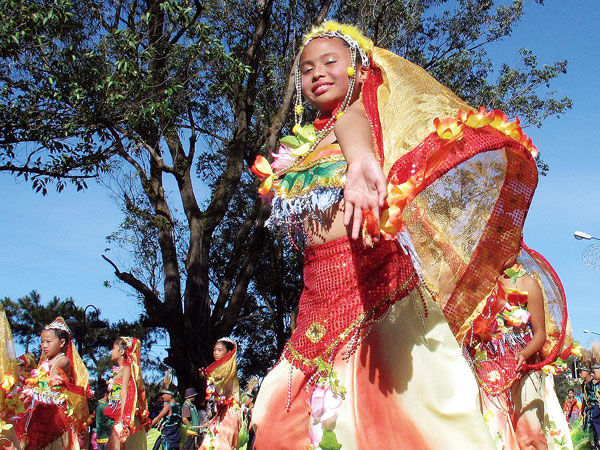
THE BAGUIO Flower Festival has become the summer capital’s annual crowd drawer but an urban planner said the government must take steps to make sure the crowd does not become too big to handle for Baguio. EV ESPIRITU/INQUIRER NORTHERN LUZON
BAGUIO CITY—The annual Baguio Flower Festival, which has been drawing most of the summer capital’s tourists in the last decade, should start selling tickets to keep down to a manageable level the visitors who watch its street dancing and float parades, an American university expert said here on Friday.
Dr. Mary Anne Alabanza-Akers, dean of the school of architecture at Baltimore University in Maryland, suggested this during a forum on heritage tourism for the towns that make up BLISTT (the economic sharing cooperative of Baguio City and its neighboring Benguet towns of La Trinidad, Itogon, Sablan, Tuba and Tublay).
Katherine Arvisu-dela Rosa, a travel agent and a Baguio conservation advocate, said the summer capital has been drawing
far more tourists than it could handle and this has affected their comfort and their security, particularly during February when the festival takes place.
She said she is certain that the city’s average daytime population of 403,000 has “compromised the safety and comfort” of both residents and visitors.
“I’ve not experienced [the festival] but I know it’s becoming very popular and with that let’s bear in mind [the city’s] carrying capacity. We have to be careful it does not become overly crowded because it destroys the ambience and nature of the city. You have these beautiful floats and you’re all crowded, jostling with other people,” Alabanza-Akers said.
“I would suggest to have tickets [sold to festival participants and guests] so that we don’t [breach Baguio’s] carrying capacity. If they miss it this year, they can return next year,” she said.
The carrying capacity measures the maximum population that could be sustained by the environment and its resources at a given moment. “Our water, the air, are all impacted by our carrying capacity,” Alabanza-Akers said.
The flower festival has been packing downtown Session Road with crowds since it was developed in 1995 by officials of the defunct John Hay Poro Point Development Corp. to drum up interest in Baguio following its devastation from the 1990 earthquake.
Patterned after the Pasadena Rose Parade in California, the flower festival has evolved into a showcase of Northern Luzon street dances and has generated up to P170 million annually, according to Baguio officials. Vincent Cabreza, Inquirer Northern Luzon